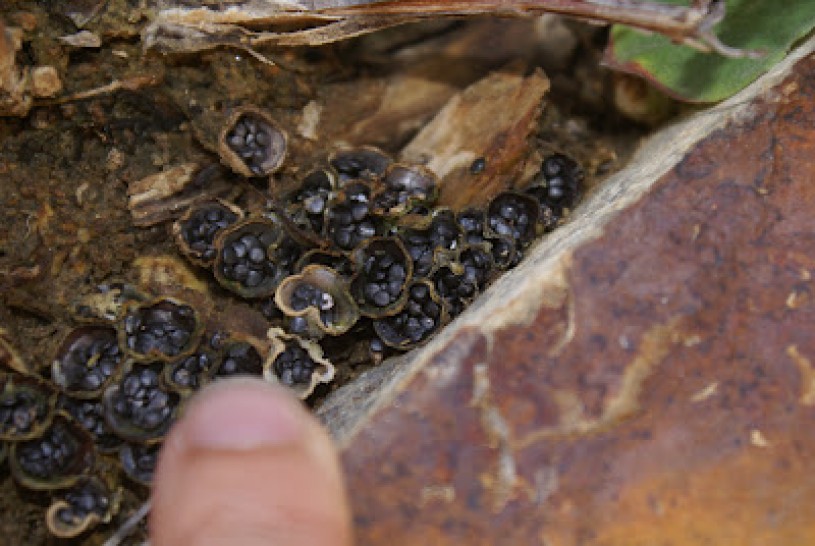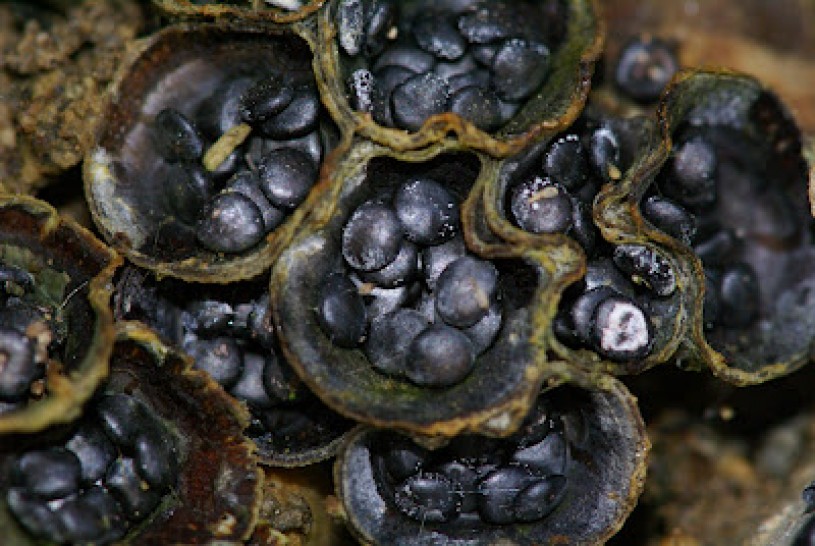Bird's Nest Fungi, Exploding Eggs, and Mushroom Soup
Yay! Today I documented the first bird's nest fungus, Cyathus sp., in the North Campus
Yay! Today I documented the first bird's nest fungus, Cyathus sp., in the North Campus. For months, I have been looking forward to finding these fascinating, weird, and wonderful fungi. When North Campus Director Carol Bornstein told me she had found some, I immediately knew I had to blog about them.

Bird's Nest Fungi with my finger for scale. As you can see, this fungus looks like a miniature bird's nest with oddly flattened eggs in it. Mycologists refer to them fondly as BNFs, bird's nest fungi. The "eggs" (periodoles to be geeky and precise) are actually packages containing thousands and thousands of spores. When a raindrop, or some other drop of water, hits the periodole it causes a miniature explosion. The spores are released and propelled out of the cup (some spores can be projected over six feet in this manner), and attach to a suitable substrate by means of a special sticky base. How'd they get here? Very likely, they hitched a ride in with a potted plant, or on the mulch we spread to suppress weeds and help keep the soil moist.

Look at those lovely periodoles! BNF and their closely related kin—puffballs, earthstars, and stinkhorns—all belong to the group of fungi that produce their spores inside of the fruitbody. In contrast, the white button or portobello mushroom, Agaricus bisporus, that you would buy at the grocery store, produces spores on the fruitbody. Next time you are the grocery store, pick up one of these mushrooms and look underneath the cap. If the cap has opened, you will see hundreds of gills. Each of these gills is a place for hundreds of spore producing structures. Unlike BNF, these mushrooms do not need rain for their spores to spread. Instead, when the spores are ripe, they are shot into the small space between gills. Gravity then takes hold and the spore falls down towards the earth. As the spore comes into contact with the air, it is gently carried away, hopefully in the direction of a suitable susbtrate it can attach to and continue the cycle. Woah, I can't wait to contemplate the spore's amazing journey over my next bowl of mushroom soup!